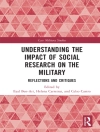Pilgrimage, travel for learning, visits to shrines, exile, and labour migration shape the religious imagination and in turn are shaped by it. Some travel, such as pilgrimage, explicitly intended for religious purposes, has equally important economic and political consequences. Other travel, not primarily motivated by religious concerns and thus neglected by many scholars, nonetheless profoundly influences religious symbols, metaphors, practices and senses of community. These studies, encompassing Muslim societies from Malaysia to West Africa, also suggest how encounters with Muslim `others“ have been as important in shaping community self-definition as encounters with European “others“.
This volume brings together historians, social scientists and jurists concerned with pilgrimage, scholarly travel and migration in both medieval and contemporary Muslim societies and explores basic issues. Can “Muslim travel“ be regarded as a distinct form of social action? What role does religious doctrine play in motivating travel and how do doctrinal interpretations differ across time and place? What are the strengths and limitations of various approaches to understanding the transnational and local significance of pilgrimage, migration and other forms of travel? An image of Muslim tradition and change in local communities in relation to travel emerges, which competes with the myth of the universality of the Islamic community.












